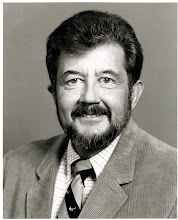The final report of the ARRA* includes summaries of the Jobs Legislation Included a Mixture of Investments, Tax Cuts for Families and Businesses, and Relief for Individuals and States.
As indicated in CBO’s initial cost projections, the Recovery Act was fairly evenly distributed. It included tax cuts ($212 billion), mandatory spending on programs such as Medicaid and unemployment benefits ($296 billion), and discretionary spending ($279 billion) in areas ranging from aid to individuals to investments in infrastructure, energy, education, and health care. Excluding the AMT patch, the Recovery Act is expected to provide a total fiscal impulse of $763 billion by 2019, with over 90 percent of that impulse occurring before the end of fiscal year 2012.
Over two - thirds of the money in the subsequent fiscal measures (also excluding routine tax extenders and other expected policies) went to tax cuts for individuals and businesses. Of the $674 billion in fiscal support following the Recovery Act through 2012, the largest components were the payroll tax cut from 2011 to 2012 ($ 207 billion) and extended unemployment insurance benefits ($161 billion). The remaining portion of the subsequent fiscal measures included relief for States, tax incentives for businesses, and investments in education, infrastructure, among other areas.
Combining both the Recovery Act and subsequent fiscal measures, half of the total fiscal support for the economy , or $689 billion, came in the form of tax cuts —mostly directed at families. The remainder went to investments in critical areas such as rebuilding
bridges and roads, supporting teacher jobs, or providing temporary help for those who found themselves unemployed because of the impact of the Great Recession. Note these totals remove routine extensions of pre-existing provisions like the Alternative Minimum Tax patch or the Medicare Sustainable Growth Rate (SGR) fix.
......................................................................
For examples, some positive accomplishments of the Recovery Act:
o Initiated more than 15,000 transportation projects, which will improve nearly 42,000 miles of road, mend or replace over 2,700 bridges, and provide funds for over 12,220 transit vehicles.
o Made the largest-ever investments in American high-speed rail, constructing or improving approximately 6,000 miles of high-performance passenger rail corridors and procurement of 120 next-generation rail cars or locomotives.
o Cleaned up 1,566 acres of properties that are now ready for reuse, far exceeding the original target of 500 acres, and led to 30,900 old diesel engines being retrofitted, replaced, or retired, which has reduced lifetime emissions of carbon dioxide by 840,300 tons and particulate matter by 3,900 tons.
o Improved more than 3,000 water quality infrastructure projects and Clean Water projects, serving more than 78 million people nationwide, as well as bringing 693 drinking water systems (serving over 48 million Americans) into compliance with Safe Drinking Water Act standards.
o Launched the innovative Race to the Top Program, which rewarded States that implemented critical reforms. Encouraged by the incentives in Race to the Top, 34 states modified state education laws and policies in ways known to help close the achievement gap and improve student outcomes.
o Provided the Advanced Research Projects Agency-Energy (ARPA-E) with an initial appropriation of $400 million, to begin researching transformative energy technologies such as second-generation biofuels, more efficient batteries, superconducting wires, and vehicles powered by natural gas.
o Boosted federal funding to renewable wind, solar, and geothermal energy as well as leveraging private dollars to help increase wind electricity net generation nationwide by 145 percent, and solar thermal and photovoltaic electricity net generation by more than fourfold from 2008 to 2012.
......................................................................
For examples, some positive accomplishments of the Recovery Act:
o Initiated more than 15,000 transportation projects, which will improve nearly 42,000 miles of road, mend or replace over 2,700 bridges, and provide funds for over 12,220 transit vehicles.
o Made the largest-ever investments in American high-speed rail, constructing or improving approximately 6,000 miles of high-performance passenger rail corridors and procurement of 120 next-generation rail cars or locomotives.
o Cleaned up 1,566 acres of properties that are now ready for reuse, far exceeding the original target of 500 acres, and led to 30,900 old diesel engines being retrofitted, replaced, or retired, which has reduced lifetime emissions of carbon dioxide by 840,300 tons and particulate matter by 3,900 tons.
o Improved more than 3,000 water quality infrastructure projects and Clean Water projects, serving more than 78 million people nationwide, as well as bringing 693 drinking water systems (serving over 48 million Americans) into compliance with Safe Drinking Water Act standards.
o Launched the innovative Race to the Top Program, which rewarded States that implemented critical reforms. Encouraged by the incentives in Race to the Top, 34 states modified state education laws and policies in ways known to help close the achievement gap and improve student outcomes.
o Provided the Advanced Research Projects Agency-Energy (ARPA-E) with an initial appropriation of $400 million, to begin researching transformative energy technologies such as second-generation biofuels, more efficient batteries, superconducting wires, and vehicles powered by natural gas.
o Boosted federal funding to renewable wind, solar, and geothermal energy as well as leveraging private dollars to help increase wind electricity net generation nationwide by 145 percent, and solar thermal and photovoltaic electricity net generation by more than fourfold from 2008 to 2012.
* http://www.whitehouse.gov/sites/default/files/docs/cea_arra_report.pdf?wpisrc=nl_wonk


No comments:
Post a Comment